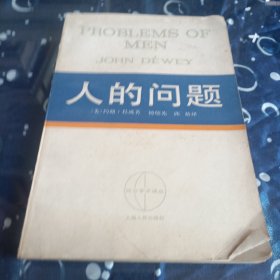
量子化学(第3版)
¥ 168 九品
仅1件
安徽亳州
认证卖家担保交易快速发货售后保障
作者洛韦(John P.Lowe)、Kirk A.Peterson 编
出版社世界图书出版公司
出版时间2011-06
版次3
装帧平装
货号0469
上书时间2024-12-04
- 最新上架
商品详情
- 品相描述:九品
图书标准信息
- 作者 洛韦(John P.Lowe)、Kirk A.Peterson 编
- 出版社 世界图书出版公司
- 出版时间 2011-06
- 版次 3
- ISBN 9787510035074
- 定价 119.00元
- 装帧 平装
- 开本 16开
- 纸张 胶版纸
- 页数 703页
- 正文语种 英语
- 【内容简介】
- 《量子化学(第3版)》在写作风格上是第二版的延续,内容上进行了扩充,更新,讲解上更加详细。结合数学最新进展,在概念上达到清晰易懂。和同类型的书相比,《量子化学(第3版)》的最大优点是概念讲述地十分透彻,让读者重新认识各种计算方法的重要性。每章末都有习题,是学习量子化学研究生水平入门书籍,也很适合该专业的老师作为参考书。目次:经典波和时间独立schr?dinger波方程;一些简单系统的量子力学;谐振子;类离子,角动量和刚量转动;多电子原子;量子力学定理和假设;变分法;简单hückel方法和应用;线性变分法的矩阵公式;扩展hückel方法;scf-lcao-mo方法和扩展;时间独立rayleigh-schr?dinger扰动法;群论;定性分子轨道理论;周期系统的分子轨道。
- 【目录】
-
prefacetothethirdedition
prefacetothesecondedition
prefacetothefirstedition
1classicalwavesandthetime-independentschrodingerwaveequation
1-1introduction
1-2waves
1-3theclassicalwaveequation
1-4standingwavesinaclampedstring
1-5lightasanelectromagneticwave
1-6thephotoelectriceffect
1-7thewavenatureofmatter
1-8adiffractionexperimentwithelectrons
1-9schrodinger'stime-independentwaveequation
1-10conditionson
1-11someinsightintotheschrodingerequation
1-12summary
problems
multiplechoicequestions
reference
2quantummechanicsofsomesimplesystems
2-1theparticleinaone-dimensional"box".
2-2detailedexaminationofparticle-in-a-boxsolutions
2-3theparticleinaone-dimensional"box"withonefinitewall
2-4theparticleinaninfinite"box"withafinitecentralbarrier
2-5thefreeparticleinonedimension
2-6theparticleinaringofconstantpotential
2-7theparticleinathree-dimensionalbox:separationofvariables
2-8thescatteringofparticlesinonedimension
2-9summary
problems
multiplechoicequestions
references
3theone-dimensionalharmonicoscillator
3-1introduction
3-2somecharacteristicsoftheclassicalone-dimensionalharmonicoscillator
3-3thequantum-mechanicalharmonicoscillator
3-4solutionoftheharmonicoscillatorschrtdingerequation
3-5quantum-mechanicalaveragevalueofthepotentialenergy
3-6vibrationsofdiatomicmolecules
3-7summary
problems
multiplechoicequestions
4thehydrogenlikeion,angularmomentum,andtherigidrotor
4-1theschrodingerequationandthenatureofitssolutions
4-2separationofvariables
4-3solutionoftheandequations
4-4atomicunits
4-5angularmomentumandsphericalharmonics
4-6angularmomentumandmagneticmoment
4-7angularmomentuminmolecularrotation——therigidrotor
4-8summary
problems
multiplechoicequestions
references
5many-electronatoms
5-1theindependentelectronapproximation
5-2simpleproductsandelectronexchangesymmetry
5-3electronspinandtheexclusionprinciple
5-4slaterdeterminantsandthepauliprinciple
5-5singletandtripletstatesforthels2sconfigurationofhelium
5-6theself-consistentfield,slater-typeorbitals,andtheaufbau
principle
5-7electronangularmomentuminatoms
5-8overview
problems
multiplechoicequestions
references
6postulatesandtheoremsofquantummechanics
6-1introduction
6-2thewavefunctionpostulate
6-3thepostulateforconstructingoperators
6-4thetime-dependentschrrdingerequationpostulate
6-5thepostulaterelatingmeasuredvaluestoeigenvalues
6-6thepostulateforaveragevalues
6-7hermitianoperators
6-8proofthateigenvaluesofhermitianoperatorsarereal
6-9proofthatnondegenerateeigenfunctionsofahermitianoperator
formanorthogonalset
6-10demonstrationthatalleigenfunctionsofahermitianoperatormaybeexpressedasanorthonormalset
6-11proofthatcommutingoperatorshavesimultaneouseigenfunctions
6-12completenessofeigenfunctionsofahermitianoperator
6-13thevariationprinciple
6-14thepauliexclusionprinciple
6-15measurement,commutators,anduncertainty
6-16time-dependentstates
6-17summary
problems
multiplechoicequestions
references
7thevariationmethod
7-1thespiritofthemethod
7-2nonlinearvariation:thehydrogenatom
7-3nonlinearvariation:theheliumatom
7-4linearvariation:thepolarizabilityofthehydrogenatom
7-5linearcombinationofatomicorbitals:thehemolecule-ion
7-6molecularorbitalsofhomonucleardiatomicmolecules
7-7basissetchoiceandthevariationalwavefunction
7-8beyondtheorbitalapproximation
problems
multiplechoicequestions
references
8thesimplehiickelmethodandapplications
8-1theimportanceofsymmetry
8-2theassumptionofar-
8-3theindependentnassumption
8-4settingupthehtickeldeterminant
8-5solvingthehmodeterminantalequationfororbitalenergies
8-6solvingforthemolecularorbitals
8-7thecyclopropenylsystem:handlingdegeneracies
8-8chargedistributionsfromhmos
8-9somesimplifyinggeneralizations
8-10hmocalculationsonsomesimplemolecules
8-11summary:thesimplehmomethodforhydrocarbons
8-12relationbetweenbondorderandbondlength
8-13splittingconstants
8-14orbitalenergiesandoxidation-reductionpotentials
8-15orbitalenergiesandionizationenergies
8-16electronenergyandaromaticity
8-17extensiontoheteroatomicmolecules
8-18self-consistentvariationsofatand/5
8-19hmoreactionindices
8-20conclusions
problems
multiplechoicequestions
references
9matrixformulationofthelinearvariationmethod
9-1introduction
9-2matricesandvectors
9-3matrixformulationofthelinearvariationmethod
9-4solvingthematrixequation
9-5summary
problems
references
10theextendedhiickelmethod
10-1theextendedhtickelmethod
10-2mullikenpopulations
10-3extendedhtickelenergiesandmullikenpopulations
10-4extendedhtickelenergiesandexperimentalenergies
problems
references
11thescf-lcao-momethodandextensions
11-1ablnitiocalculations
11-2themolecularhamiltonian
11-3theformofthewavefunction
11-4thenatureofthebasisset
11-5thelcao-mo-scfequation
11-6interpretationofthelcao-mo-scfeigenvalues
11-7thescftotalelectronicenergy
11-8basissets
11-9thehartree-focklimit
11-10correlationenergy
11-11koopmans'theorem
11-12configurationinteraction
11-13sizeconsistencyandthem011er-plessetandcoupledcluster
treatmentsofcorrelation
11-14multideterminantmethods
11-15densityfunctionaltheorymethods
11-16examplesofabinitiocalculations
11-17approximatescf-momethods
problems
references
12time-independentrayleigh-schr6dingerperturbationtheory
12-1anintroductoryexample
12-2formaldevelopmentofthetheoryfornondegeneratestates..
12-3auniformelectrostaticperturbationofanelectronina"wire"
12-4theground-stateenergytofirst-orderofheliumlikesystems
12-5perturbationatanatominthesimplehtickelmomethod
12-6perturbationtheoryforadegeneratestate
12-7polarizabilityofthehydrogenatominthen=2states
12-8degenerate-levelperturbationtheorybyinspection
12-9interactionbetweentwoorbitals:animportantchemicalmodel
12-10connectionbetweentime-independentperturbationtheoryand
spectroscopicselectionrules
problems
multiplechoicequestions
references
13grouptheory
13-1introduction
13-2anelementaryexample
13-3symmetrypointgroups
13-4theconceptofclass
13-5symmetryelementsandtheirnotation
13-6identifyingthepointgroupofamolecule
13-7representationsforgroups
13-8generatingrepresentationsfrombasisfunctions
13-9labelsforrepresentations
13-10someconnectionsbetweentherepresentationtableandmoleculorbitals
13-11representationsforcyclicandrelatedgroups
13-12orthogonalityinirreducibleinequivalentrepresentations
13-13charactersandcharactertables
13-14usingcharacterstoresolvereduciblerepresentations
13-15identifyingmolecularorbitalsymmetries
13-16determininginwhichmolecularorbitalanatomicorbitalwiappear
13-17generatingsymmetryorbitals
13-18hybridorbitalsandlocalizedorbitals
13-19symmetryandintegration
problems
multiplechoicequestions
references
14qualitativemolecularorbitaltheory
14-1theneedforaqualitativetheory
14-2hierarchyinmolecularstructureandinmolecularorbitals
14-3h+revisited
14-4h2:comparisonswithh+2
14-5rulesforqualitativemolecularorbitaltheory
14-6applicationofqmotrulestohomonucleardiatomicmolecules
14-7shapesofpolyatomicmolecules:walshdiagrams
14-8frontierorbitals
14-9qualitativemolecularorbitaltheoryofreactions
problems
references
15molecularorbitaltheoryofperiodicsystems
15-1introduction
15-2thefreeparticleinonedimension
15-3theparticleinaring
15-4benzene
15-5generalformofone-electronorbitalsinperiodicpotentials——bloch'stheorem
15-6aretrospectivepause
15-7anexample:polyacetylenewithuniformbondlengths
15-8electricalconductivity
15-9polyacetylenewithalternatingbondlengths——peierls'distortion
15-10electronicstructureofall-transpolyacetylene
15-11comparisonofehmoandscfresultsonpolyacetylene
15-12effectsofchemicalsubstitutiononthe
15-13poly-paraphenylene——aringpolymer
15-14energycalculations
15-15two-dimensionalperiodicityandvectorsinreciprocalspace
15-16periodicityinthreedimensions——graphite
15-17summary
problems
references
appendix1usefulintegrals
appendix2determinants
appendix3evaluationofthecoulombrepulsionintegraloverisaos
appendix4angularmomentumrules
appendix5thepairingtheorem
appendix6hiickelmolecularorbitalenergies,coefficients,electrondensities,andbondordersforsomesimplemolecules
appendix7derivationofthehartree-fockequation
appendix8theviriaitheoremforatomsanddiatomicmolecules
contents
appendix9bra-ketnotation
appendix10valuesofsomeusefulconstantsandconversionfactor,
appendix11grouptheoreticalchartsandtables
appendix12hintsforsolvingselectedproblems
appendix13answerstoproblems
index
点击展开
点击收起
— 没有更多了 —















以下为对购买帮助不大的评价